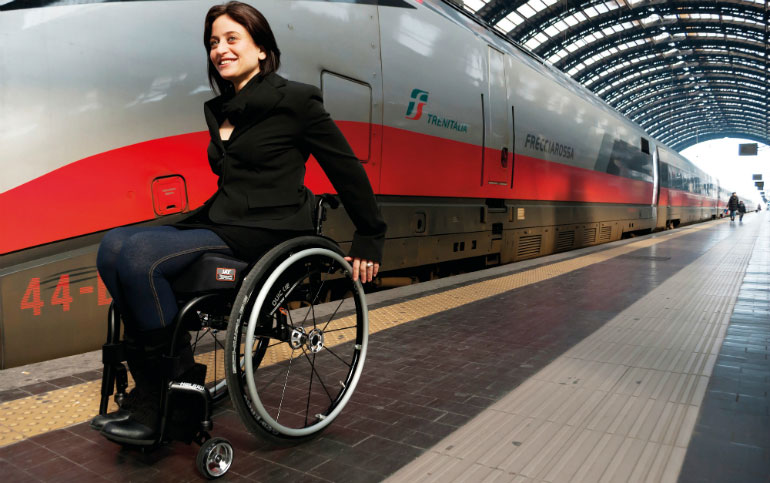Share:
Take it offline!
This Education in Motion resource is also available as a printable PDF.
Download PDF
Whether you’re looking to commute to and from work, travel to medical appointments, visit family and friends, or take in some sight-seeing, having access to accessible transportation is vital for getting around and living without limits!
Public transport Vs private transport
Accessibility in terms of transport is a broad concept that refers to both the facilities and infrastructure that provide people with reduced mobility the use and enjoyment of public and private transportation with the same safety and comfort conditions that other travellers are subjected to.
An accessible city must provide guarantees that, in addition to having accessible transport lines (buses, metros, trams, etc.), it also has stations, terminals and stops adapted for travellers with reduced mobility.
Private transportation accounts for approximately 50% of that used by people with reduced mobility, in this instance it will be the company’s responsibility to guarantee accessibility, or the user’s if talking about adapted vehicles in which they may travel as a driver or as passengers.
Whether we talk about public or private transport, several standards must be met in terms of comfort, safety and efficiency.
If, for example, we talk about travellers with reduced mobility who need a wheelchair, it must be anchored to the chassis of the vehicle and the passenger must be fastened with a safety belt with at least three anchor points (so that it can cover the chest across the shoulder and pelvis) and support the back with a headrest. The position of the wheelchair will ideally be with its back to the direction of travel. The wheelchair should also be crash tested and passed in accordance with ISO 7176-19.
In the case of infrastructures, they must allow every traveller to enter, exit, climb or descend in optimum conditions, and the information provided regarding the use of lifts and platforms must be clear, understandable and easy to use by any user.

Lastly, the different means of transport must have specially reserved spots for people with reduced mobility, seats with floor anchors for wheelchairs and entry and exit systems (lift platforms, ramps, etc.) which are fully accessible.
On a legislative level, regulation on the accessibility on the transport of people with disabilities and reduced mobility is found in the Equality Act 2010. It refers to the access and use of means of transport for people with disabilities travelling by rail, sea, air and road, as well as everything about urban and suburban transport by bus, metropolitan railway, adapted taxis or special transport services.
Reduced mobility and transport: other aspects to bear in mind
When purchasing a vehicle, a person with reduced mobility must take into account if he/she is going to drive it, and also if it is going to be his/her main means of transport and, if so, they should check if it is possible to carry out the necessary modifications to provide easy access to the vehicle.
Regional and local administrations can often grant financial aid both for the purchase of a vehicle which has already been adapted, and for its modification. In the UK, many will also qualify for the Motability scheme to assist with financing either a vehicle, powered wheelchair or mobility scooter.
In order to learn how to drive, at Disability Driving Instructors, you will find information on driving schools with adapted cars where you can practice driving special vehicles.
The parking permit for people with disabilities and the European Parking Permit are other advantages that can benefit people with reduced mobility.
Whilst accessing transportation with reduced mobility may be more challenging with some prior research and planning it can be achieved, giving you the freedom to get to where you want to be.
Do you want to keep up to date with all the information about mobility? Don’t forget to check out our range of manual wheelchairs and our powered wheelchairs to find the best mobility solution for you. Subscribe to the Sunrise Medical blog to receive all our updates!